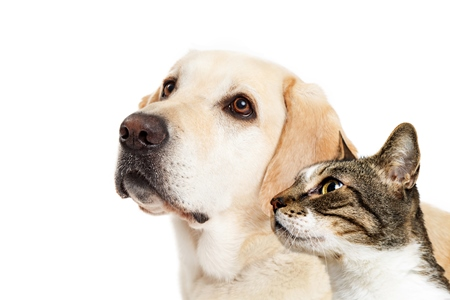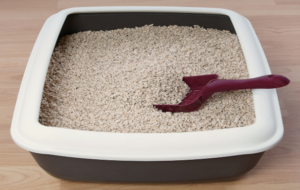What is a Senior Pet?
Save $50.00 during the month of January, 2020 on the Senior Wellness Package.
Sale Price: Dogs $180.00 Cats $205.00
Beechmont Pet Hospital now offers a Senior Pet Wellness Package for pets 7 years and older that includes an exam, bloodwork, thyroid test, urinalysis, and a nail trim. For dogs the package also includes a heartworm/tick-borne diseases test and for cats it includes a feline leukemia/FIV /heartworm test. We are offering this “senior pet discount” package because your older pet requires more attention and care in their aging years.
What is a Senior Pet?

While it’s true that many pets today are living longer than they did in the past, most are still technically considered a “senior” starting around age 7 or 8. As a general rule, cats and small dogs tend to have longer lifespans. It is not uncommon to see cats 15-16 years old or even older, and small dogs aged 14-15. Large dogs tend to live an average of about 12 years, and giant breeds may only live until age 7-8. Giant breeds should be considered a senior starting at age 5-6. However, these are averages, and there are always exceptions to the rule. No one can predict the future, but there are steps you can take to try to give your senior pet the best chance at a longer life, or at least a better quality of life as they age.
What can I do to help my pet live a longer, happier life?

Ideally, senior pets will have physical exams biannually, and truly geriatric animals or those with significant medical conditions may benefit from quarterly exams. Since many aging changes occur slowly, they may not be as obvious to the pet owner as to an objective observer. Unintended weight loss for example, can easily be overlooked at home, but is often one of the first symptoms that something is wrong. Heart disease is also very common in pets, and usually cannot be identified without using a stethoscope. Regular physical exams allow your vet to catch problems early, and document trends over time.
In addition to physical exams, one of the most important things you can do to help extend your pet’s life is senior bloodwork screenings. Early symptoms of disease often go unnoticed in pets due to their natural inclination to hide vulnerability and multi-pet households make it difficult to detect subtle changes in a particular individual. Therefore, a bloodwork screening to assess internal organ function is often the best way to identify a problem before there are noticeable clinical signs. These senior blood panels can help identify common problems such as kidney disease, liver disease, diabetes, thyroid disease, anemia, or high white blood cell counts. Sometimes they do not provide an exact diagnosis, but they can highlight areas of concern that warrant further investigation. Unfortunately, if your pet is actually sick enough to show symptoms, the remaining treatment options may be limited (and often expensive). Early detection is the key to slowing the progression of many chronic diseases. For example, many older cats will develop kidney disease, but research shows that they can sometimes manage this disease for years if it is caught early and they are started on a prescription kidney diet.
Careful observation and reporting of any symptoms to your vet in a timely manner can be a lifesaver for your pet. Trust your gut. If something just doesn’t seem right with your pet, don’t ignore it. Pet parents often note that their pet is “slowing down,” and dismiss it as a natural part of the aging process, however, it could be an indication of a serious medical condition. Other symptoms that are common in pets of all ages, such as vomiting and diarrhea, coughing/sneezing, skin rashes etc. may have simple explanations, but the chances of them being due to a serious disease increase with age.
Next, we’ll discuss some of the most common signs to watch for in our older patients.
Joint Pain

This is one of the most frequent issues we see in older patients, especially large and giant breed dogs. It often starts as simply a nuisance, but ultimately can be a major factor in end of life decisions, as mobility problems in these breeds become difficult to manage. People sometimes assume that their pets are not in pain if they are not crying out or refusing to eat, but often there are subtle signs of discomfort that do affect their quality of life. These can include slower transitioning between positions, difficulty with stairs or jumping on furniture/into cars, general stiffness or temporary limping after exercise, excessive licking over the joints, muscle loss, and even increased panting or restlessness. In cats, this can also manifest as stiffness and muscle loss, as well as difficulty using the litterbox, decreased play behavior, increased irritability, and taking multiple shorter jumps instead of one larger jump when climbing. Sometimes a weight management plan, regular but low intensity exercise, and joint supplements can go a long way towards alleviating joint pain in the early stages. More chronic pain can often benefit from daily anti-inflammatory or pain medications, so do not be afraid to discuss with your veterinarian which options are best for your pet.
Dental Disease

Dental disease is another widespread issue in pets of almost any age, but often becomes especially problematic is our older pets, in many cases after years of neglect. Our pets often suffer in silence because they are still eating, but a quick check inside their mouth reveals a yellow to brown or greenish layer of tartar, redness of the gums, bad breath, and sometimes even loose or broken teeth, bleeding gums, or foul discharge. Sensitive pets may lose weight or have change in their eating habits, such as taking longer to chew, eating only soft food, dropping food, or drooling. Eating hard food, using dental chews, and oral rinses can help somewhat, but nothing can replace regular brushing at home (often unrealistic) and regular professional cleanings under anesthesia at your vet’s office.
Weight Gain or Loss

As our pets’ metabolism and activity level slows down, they do often gain weight. This is especially true for spayed and neutered animals. Excess weight causes many of the same problems in animals as it does in people, so it’s important to try to maintain a healthy weight as they age. Occasionally, weight gain can be a symptom of a medical issue such as hypothyroidism or Cushing’s disease. Likewise, weight loss can occur in geriatric pets as they naturally lose muscle mass over time. However, as mentioned above, this is very often a symptom of a serious medical issue including kidney disease, liver disease, diabetes, hyperthyroidism, cancer, inflammatory bowel disease, etc. and is always worth a closer look. Be sure to tell your vet about any additional symptoms that may accompany the weight loss, such as vomiting or diarrhea, or excessive thirst or urination, or loss or lack of appetite.
Inappropriate Elimination or “Accidents”

Senior pets are especially prone to accidents for a variety of reasons, including urethral sphincter incontinence, enlargement of the prostate, mobility issues, cognitive dysfunction, neurologic/spinal problems, and whole host of diseases that cause excessive thirst and urination such as diabetes or kidney disease. This is often another major factor in euthanasia discussions, so be sure to contact your vet to discuss all your options. There are medications that can help control incontinence for instance, and environmental modifications such as changing the number, location, and type of litterboxes that may lessen the damage.
“Lumps and Bumps”

Most senior pets will develop some type of “lump” eventually. Many are benign cysts, warts, skin tags, calluses, and fat deposits, but any new lump should be checked by your vet to screen for cancer. Your veterinarian may recommend a needle aspirate or surgical biopsy for a more accurate diagnosis. Likewise, any older lumps that have changed in size/shape/color/texture or become bothersome, bleeding, or ulcerated should also be examined. Rapidly growing lumps that are firmly attached, hard, or painful are particularly worrisome.
Cognitive and Behavioral Changes

Most older pets will experience at least some mild behavioral changes, and some will undergo significant cognitive changes or “senility.” Some animals are simply more irritable or less responsive, which may be a result of discomfort from joint pain or other medical conditions. Animals with hearing or vision loss can be more easily startled, and may react aggressively. Some previously anti-social pets may become more affectionate or “needy.” Signs of cognitive changes can include wandering aimlessly, staring off, restlessness/anxious behavior, increased panting, howling/abnormal vocalizations, and accidents in the house. These symptoms often seem especially prominent at night. Talk to your veterinarian to try to determine the root cause of the behavioral changes, and possible treatment options.

Finally, don’t skimp on your normal preventative care. While an older pet may not be as active or spend as much time outdoors as they used to, vaccines and parasite prevention are still important. Older pets may not be able to recover from these infections as quickly as their younger counterparts. Caring for a senior pet can get expensive, but a little short-term investment in preventative care and early detection can save you in the long run, and dramatically improve your pet’s quality of life.


